Use goals to see how LiveChat helps you achieve your business objectives. Check how many chats end with the desired action taken by the user like making a purchase or signing up for a trial.
There’re many different user actions you can measure with goals. Read on to learn how to configure and use them.
Add a new goal
When you visit the goals section for the first time, you will see a short description and a button that lets you add your first goal.
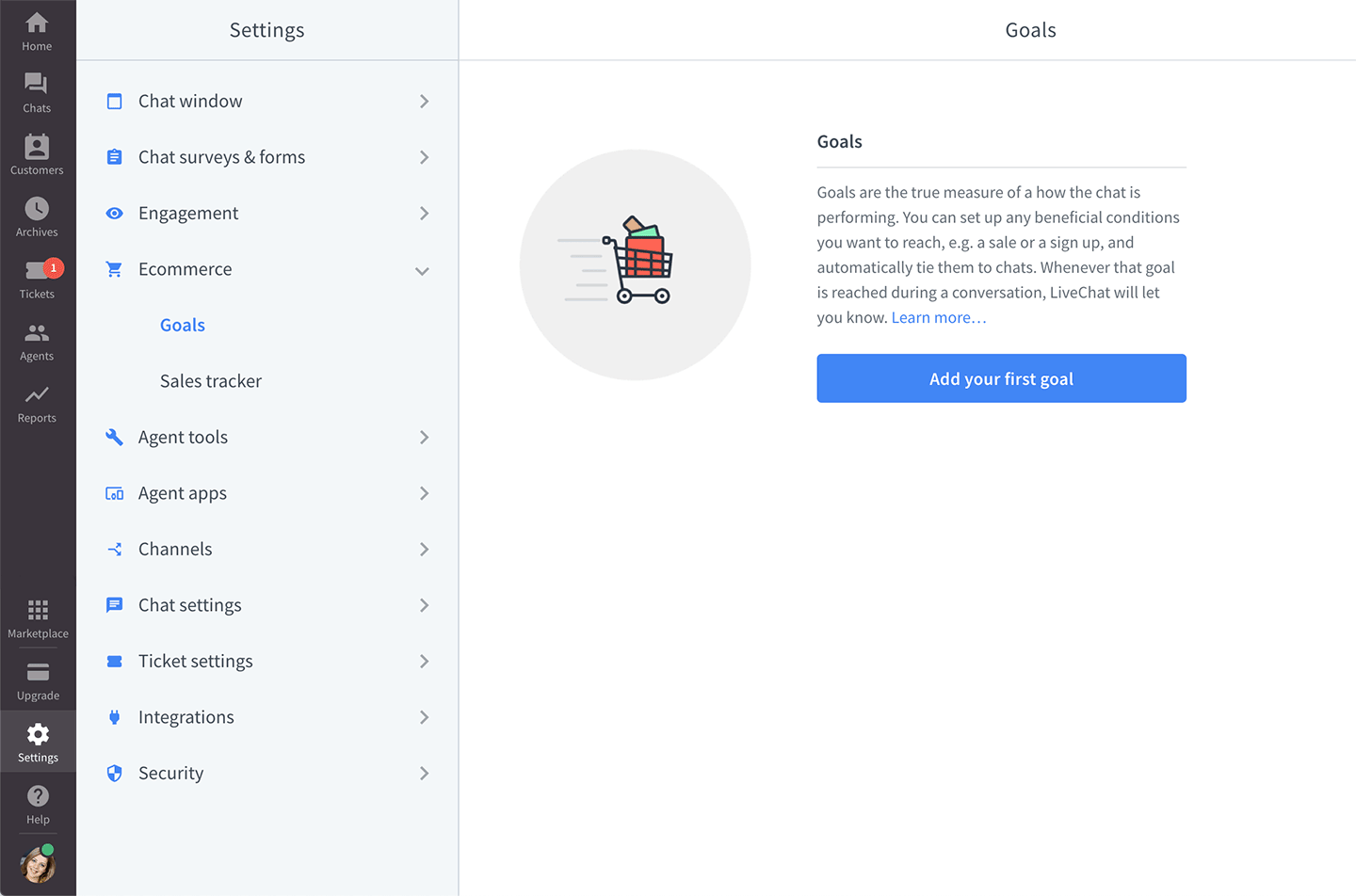
Once you've added your first goal, you will see a list of goals instead.
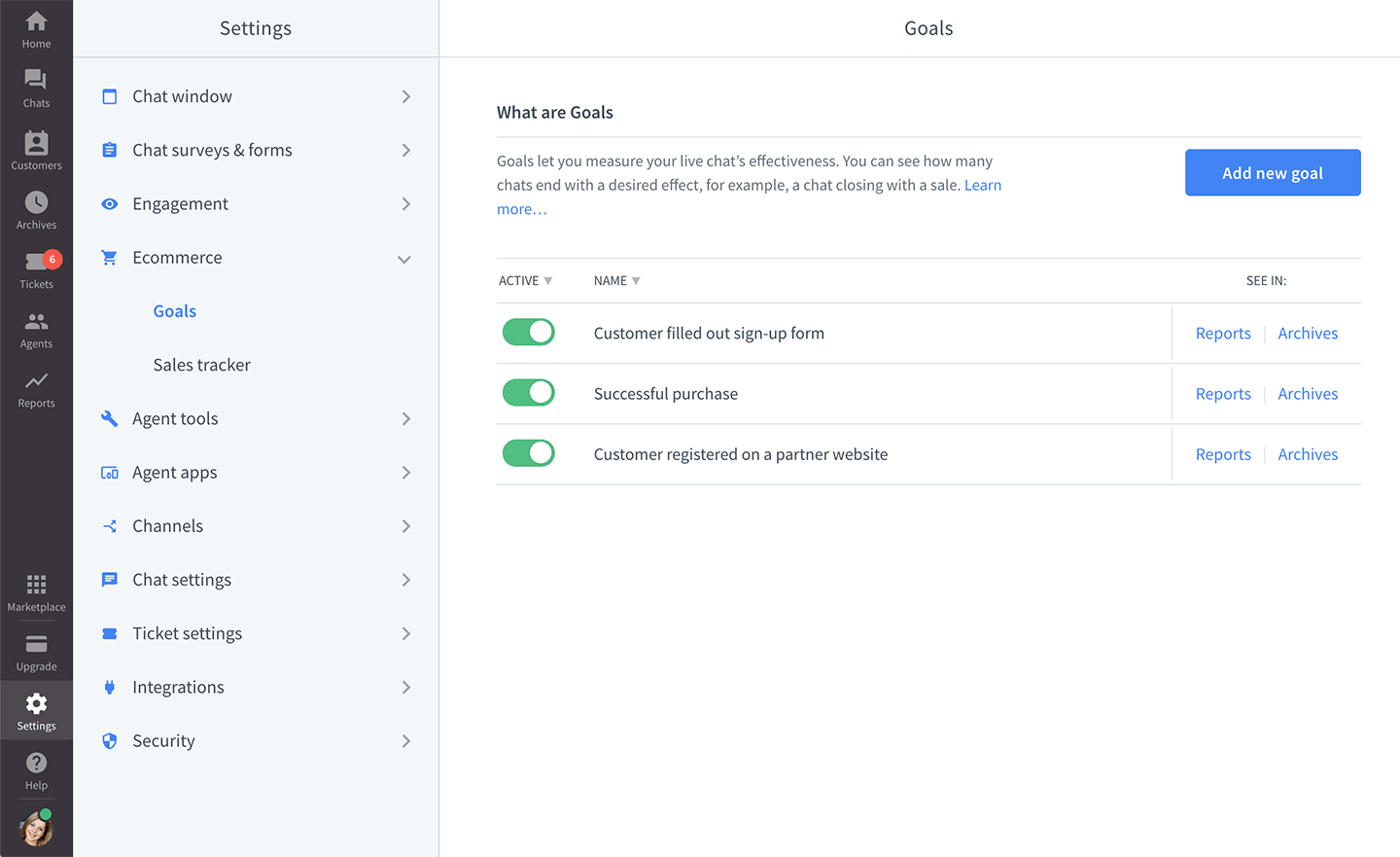
There are three types of goals that you can use:
- Landing page URL address—counts as completed if the customer reaches a specific page after a chat. For example, your after-purchase 'thank you' page.
- Custom variable set in LiveChat code—achieved when a specific condition set in your website's code (like filling out a registration form) is fulfilled.
- Set by LiveChat API—marked as successful by LiveChat API when the visitor ends up on a site that doesn't use LiveChat tracking code.
Landing page URL address goal
Use this type of goal to track how many chats end with the customer going to a particular page. For example, you can check the number of customers that gets to your checkout page after a chat. This allows you to see how chats impact your sales.
To create this kind of goal, go through the following steps:
1) Go to Settings > Ecommerce > Goals.
2) Click on Add new goal.
3) Enter the name for your goal and select visitor lands on a specific page... from the drop-down menu.
4) Choose whether the address should be an exact match or should only contain a part of the address.
5) Enter the target URL address.
6) Click on Add new goal to finalize.
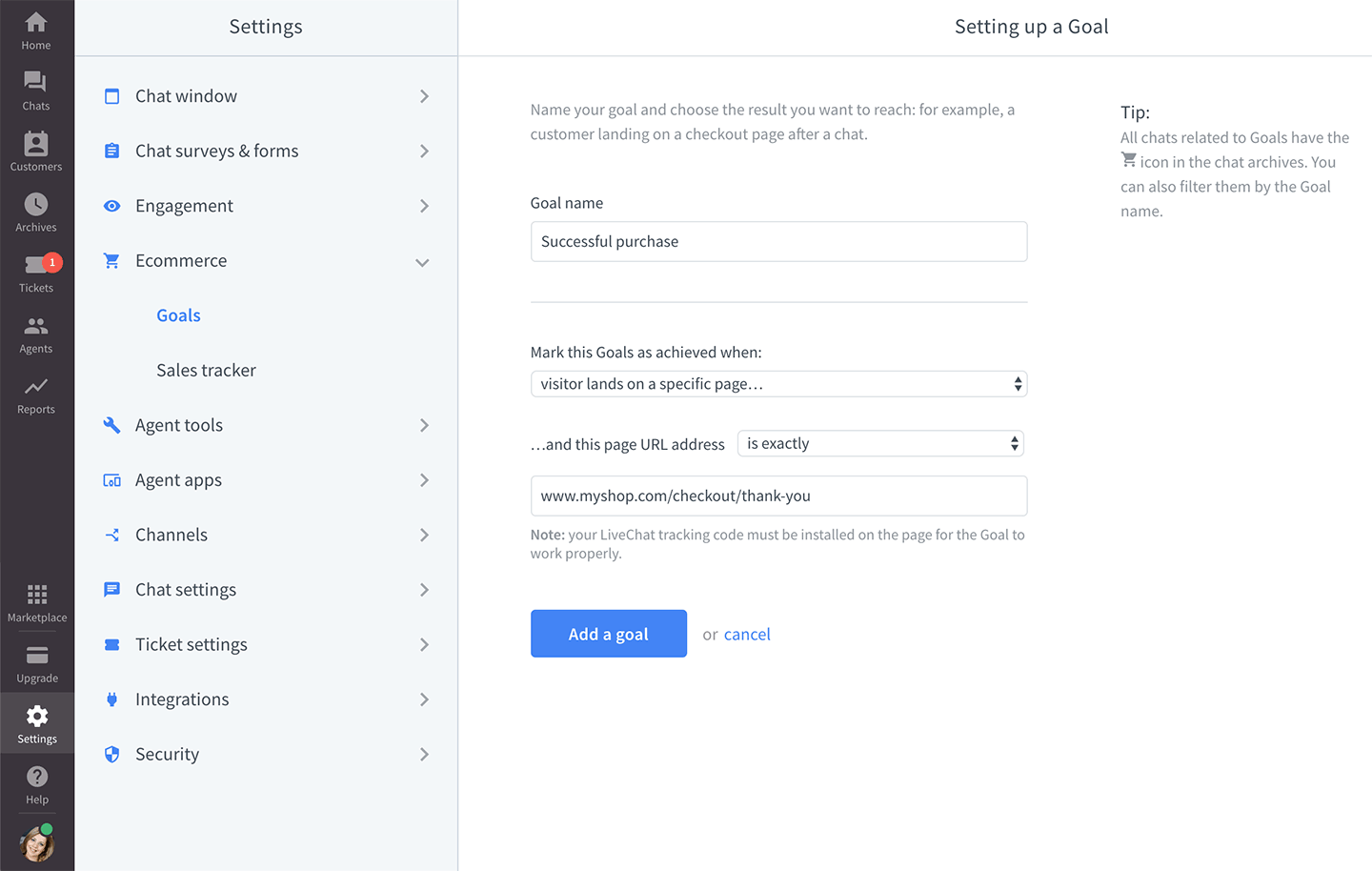
When you've added the goal, it will appear on the goal list in Settings. Now, every time a customer geta to the specified address after a chat, it will count as a completed goal.
Custom variable in LiveChat code goals {#custom_variable_in_livechat_code}
This type of goal is useful when you need to use custom variables instead of a URL address. For example, when you have a dynamic website that doesn't change the URL address when customers enter the checkout.
To create this kind of goal, follow the steps below:
1) Go to Settings > Ecommerce > Goals.
2) Click on Add new goal.
3) Name your goal and select custom variable in LiveChat code has met a specific value from the drop-down menu.
4) Enter the variable you want to check for and specify the value it should have.
5) Select Add a goal to finalize.
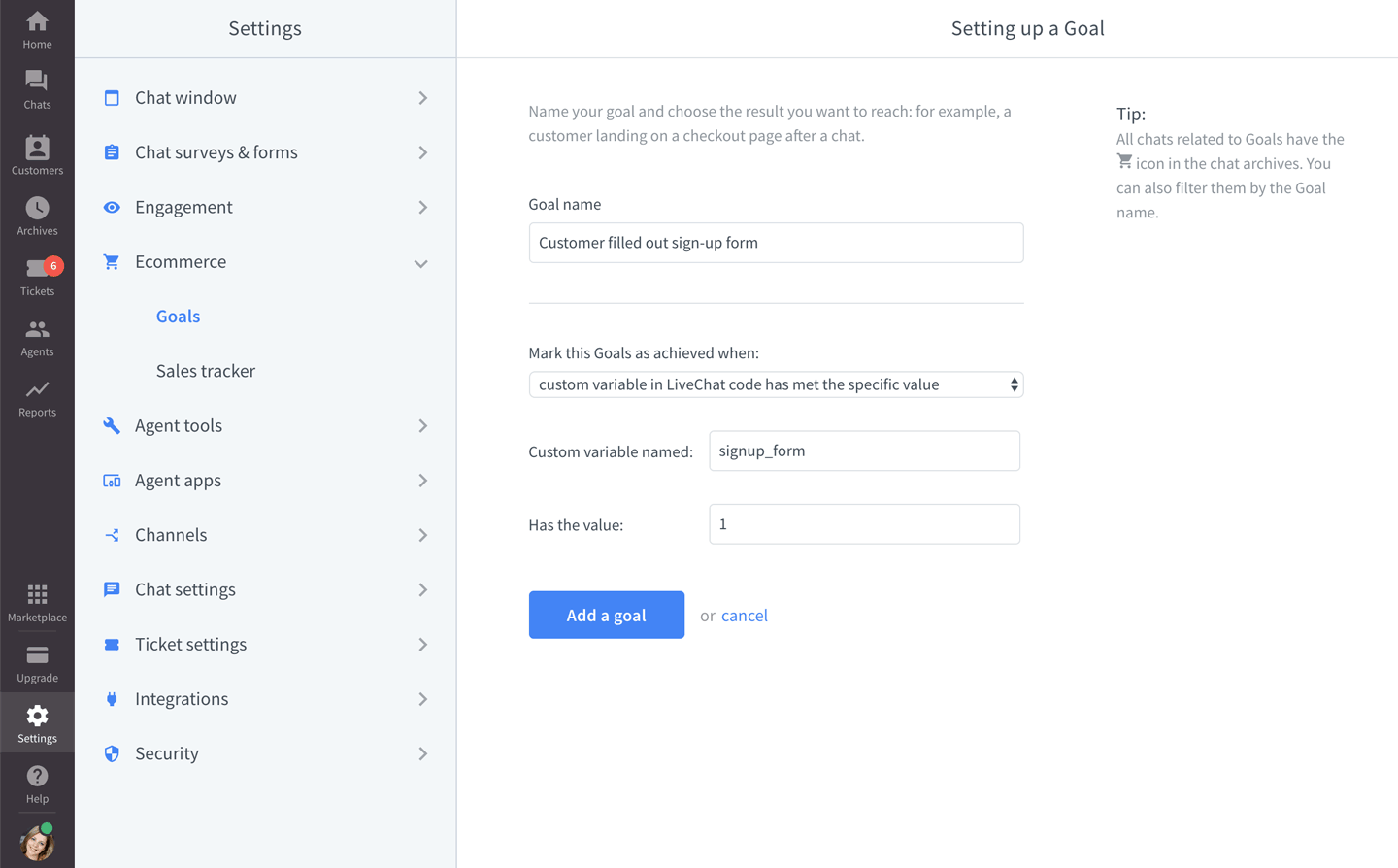
Now every time the particular custom variable value is met, the goal is completed.
Instead of setting one broad goal for all sales, you can create several goals for different value brackets. Create several such brackets for different price ranges to see how LiveChat affects your sales.
Goals set by LiveChat API
This goal type can be used when the goal is completed on a website without your LiveChat tracking code. For example, you can use it when you want to see how many of your visitors go to your partner's website.
Create this goal by going through these steps:
1) Go to Settings > Ecommerce > Goals.
2) Click on the Add new goal button.
3) Name your goal and select LiveChat API request is sent as the condition.
4) Click on Add a goal.
5) Complete the setup of the goal by using our goals API to send requests every time the goal is completed.
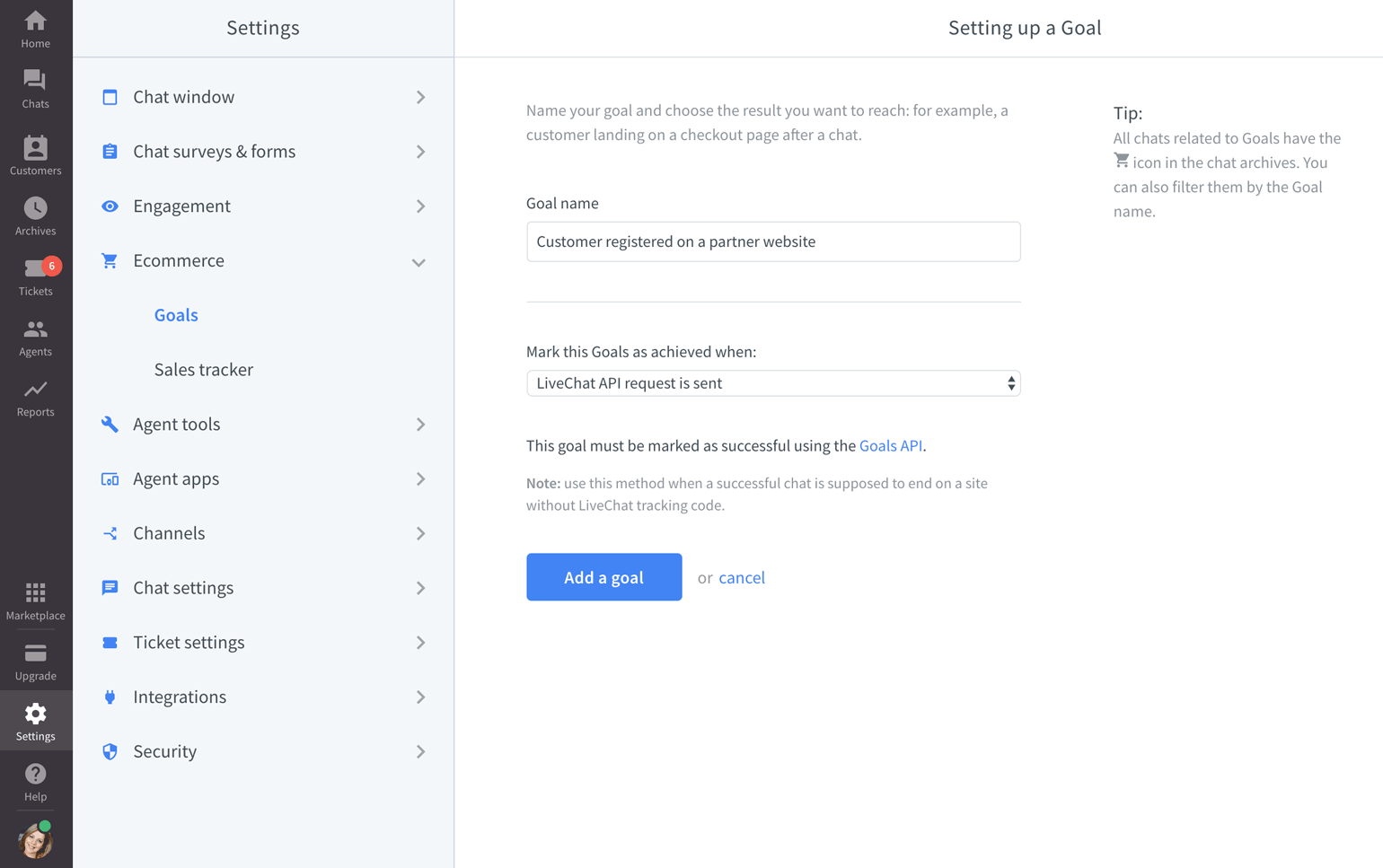
You can track goals using the achieved goals report. See how specific goals perform using filters.
Edit a goal
To edit a goal, follow these steps:
1) Go to Settings > Ecommerce > Goals.
2) Hover over the goal you want to edit.
3) Click on the edit link.
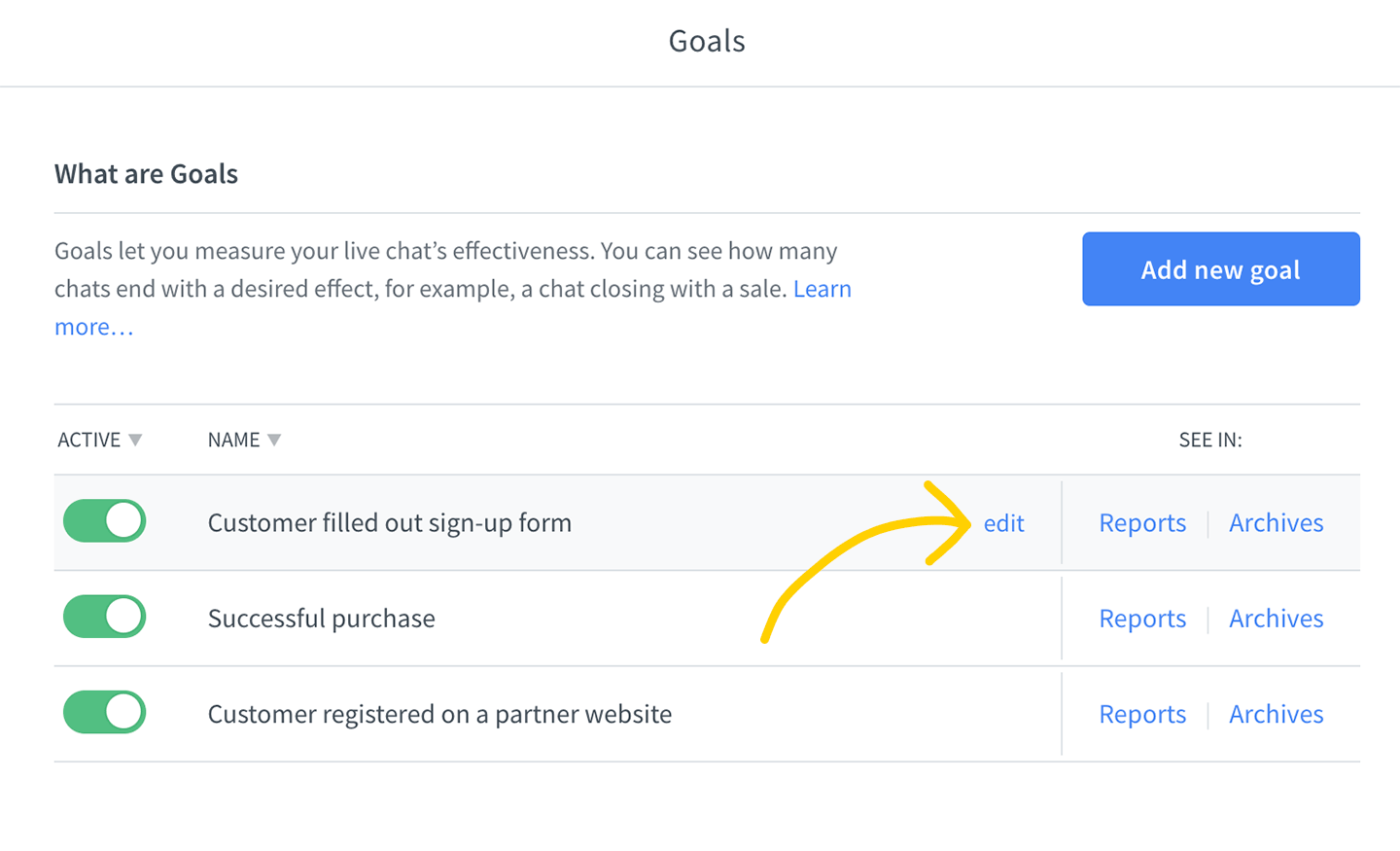
4) Make the needed changes.
5) When you're finished, click on Save changes.
Delete a goal
To delete a goal, follow these steps:
1) Go to Settings > Ecommerce > Goals.
2) Hover over the goal you want to delete.
3) Click on the edit link.
4) Click on delete this goal.
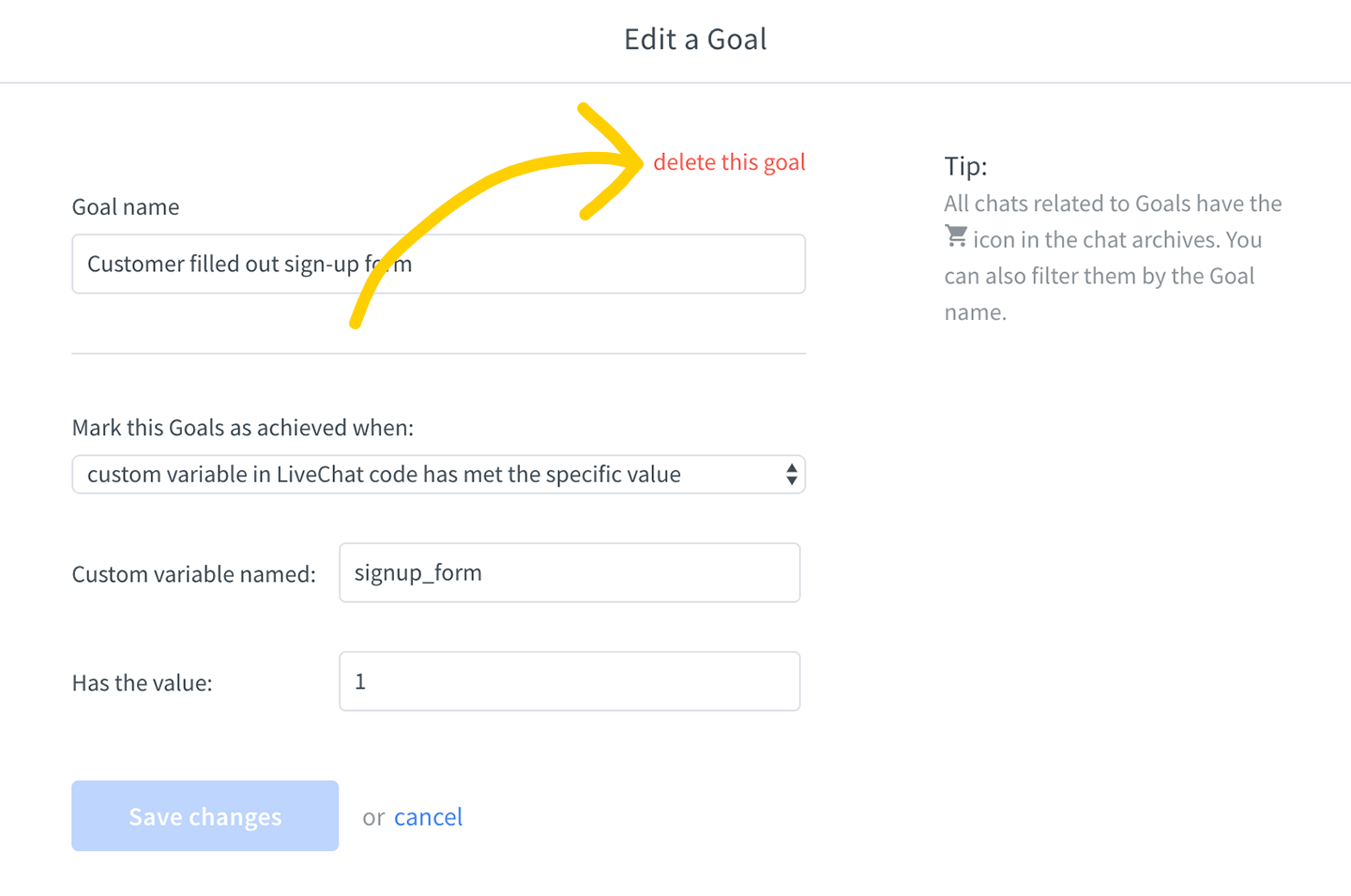
5) Confirm by clicking on Delete.
 Help Center
Help Center